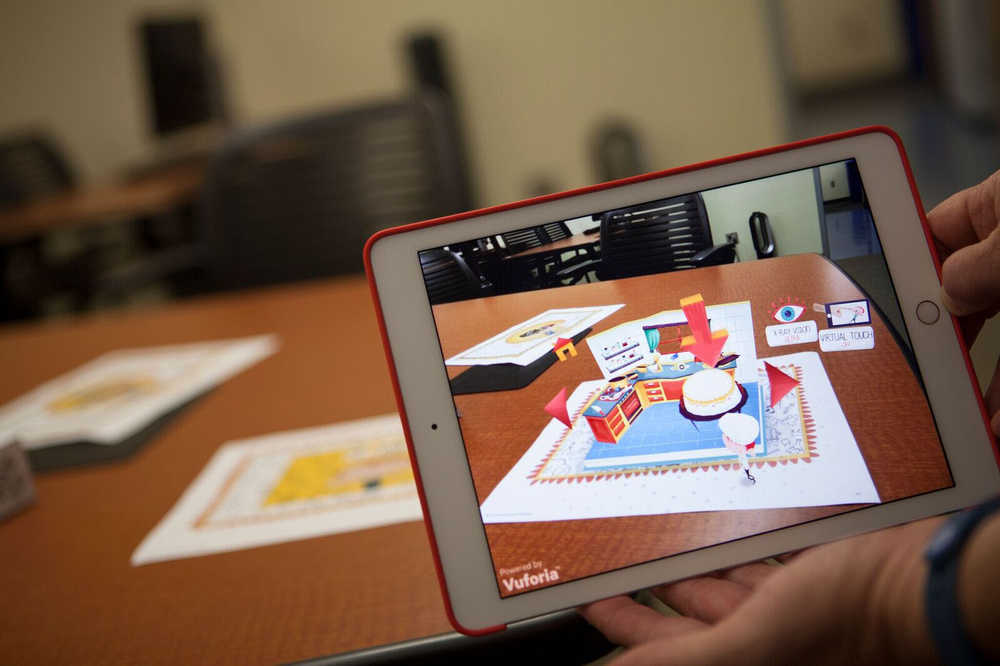Both students and Squirtles recently returned for another academic year. Pokémon Go, that irrepressible summer craze, has infiltrated the classroom.
Many teachers worry that the wildly popular game — accessible on any smartphone — presents yet another digital distraction for their students. And while absolutely valid, there’s also potential to harness the game’s popularity as an innovative teaching tool.
Pokémon Go relies on augmented reality, which could change the way games are played — and classes are taught — long into the future.
“AR [augmented reality] has been around for years but if I had to guess, looking into the future, [Pokémon Go] would be what brought AR into the limelight,” said Dave Dannenberg, director of Academic Innovations and eLearning at University of Alaska Anchorage.
As an assistant professor of instructional technology, Dannenberg knows students will play the game in class this fall. It’s a common concern; another UAA professor explicitly wrote in his course syllabus that students playing Pokémon Go will be docked participation points. But rather than bemoan students’ lack of focus, Dannenberg sees the game as an opportunity.
“AR opens up different things we can bring into the classroom,” he noted. With the right app, chemistry students can move element blocks around on a table while their iPad tells them whether they have a viable chemical bond. Language students can hover their Android phone over a map to hear dialects from different regions. Preschool picture books jump to life with AR technology.
Augmented reality enhances the real world through a digital lens. Pokémon Go, for example, capitalizes on GPS maps to overlay computer-generated content (in this case, animated “pocket monsters”) on the physical world. Academic apps, though, can be programmed to react, reward, explain and educate when a digital lens — like your everyday smartphone — passes over digital triggers.
“Just because [students are] playing a game doesn’t mean you can’t figure out a way to work it into what you do,” Dannenberg said.
The beauty of AR is its prevalence and accessibility. Most classrooms are already equipped with the right technology and, according to Dannenberg, college students carry three to four internet-connected devices every day (think laptops, smartphones, tablets, smart watches). That’s a lot of possibility for engaging students in creative and innovative learning.
Pokémon Go may not be an educational app, but it’s certainly taught students of every age how to work within augmented reality.
Campuses are great for AR education in part because they’re also hubs for Pokémon Go. To boost skills and add Pokémon to their stable, players must visit “Poké stops” and “gyms”— virtual locations locked to recognizable real-world sites. As the Chronicle for Higher Education noted, “Campuses are prime destinations for players because of their landmarks.”
UAA is blessed with roughly 30 Poké Stops and four gyms, which many students are discovering for the first time now that class is back in session. Though the game launched in July, its popularity hasn’t cooled this fall.
“It’s been crazy,” student Josh Rutten said of the game’s impact on campus. “This game is reaching out to my generation.”
Rutten — president of UAA’s Anime Club — lived and worked on campus this summer and says he noticed a serious uptick in interest among student workers when the game debuted. That enthusiasm carried into the semester; students have been spotted with ‘Pokémon trainer’ t-shirts and members of the cheer team even sported Pokémon face paint at a recent campus fair. Student radio station KRUA released a tongue-in-cheek PSA about playing the game safely.
He works part-time in UAA’s Academic Innovations and eLearning department and is also excited about the future of AR.
“Its crazy to think that organizations that have never thought about Pokémon as a tool to entertain or inform people are now jumping on this bandwagon, and its proving to have positive results,” he said. “It’s amazing.”
In his eyes, the app has already made a significant cultural impact, citing it’s focus on social interaction and physical activity (the game’s emphasis on exploring the physical world led Vox to dub Pokémon Go “an exercise app that actually works”).
“I haven’t seen anything this positive in a long time,” Rutten continued. “We’ve seen people come together in negative times, but this is a positive. That’s a really good thing in this day and age.”
Months after its release, Pokémon Go has proven to be more than a splash of sweet summertime fun. The current game is essentially a first draft and will continue to evolve with new quests and characters, making for a more social experience further fine-tuned for environments like a college campus.
“To see AR come to the forefront is kind of exciting,” Dannenberg said, adding that he hopes to help faculty capitalize on the craze in their curricula this year.
Whether or not this app proves to be a fad, the monstrous exposure for augmented reality can only be a benefit for the classroom.
• Joey Besl highlights alumni stories and campus events at UAA.
More Neighbors

